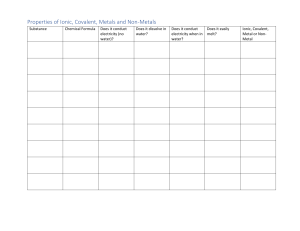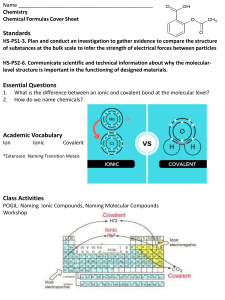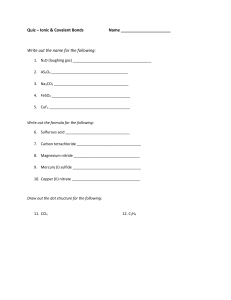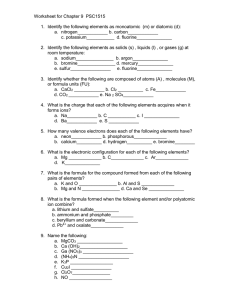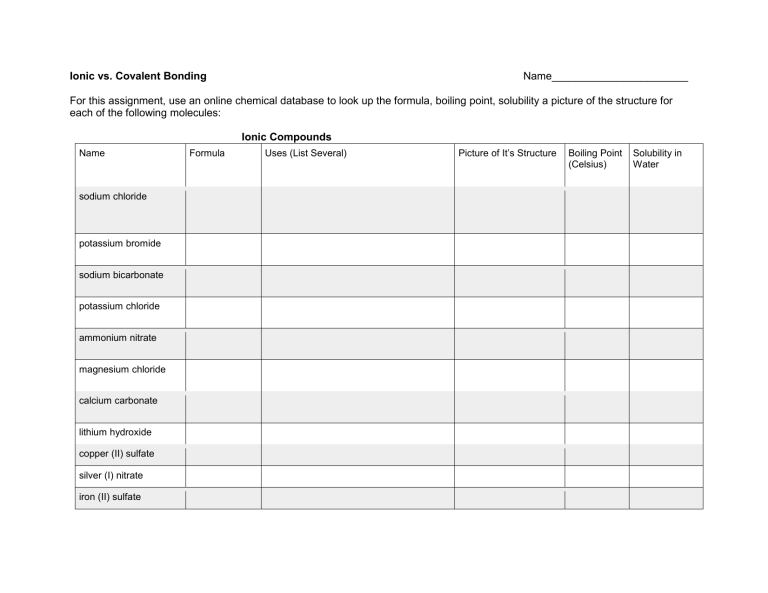
Ionic vs. Covalent Bonding Name_______________________ For this assignment, use an online chemical database to look up the formula, boiling point, solubility a picture of the structure for each of the following molecules: Ionic Compounds Name sodium chloride potassium bromide sodium bicarbonate potassium chloride ammonium nitrate magnesium chloride calcium carbonate lithium hydroxide copper (II) sulfate silver (I) nitrate iron (II) sulfate Formula Uses (List Several) Picture of It’s Structure Boiling Point (Celsius) Solubility in Water Covalent Compounds Name propanediol 2-phenylethanol acetone vinegar (ethanoic acid) sucrose (sugar) 1-bromobutane ethylene glycol benzene vitamin C caffeine lysine isopropyl alcohol Formula Uses (List Several) Picture of It’s Structure Boiling Point (Celsius) Solubility in Water Summary Questions: 1. Which type of compounds (ionic or covalent) have metals in their formulas? 2. Which type of compound (ionic or covalent) have the lowest boiling points? 3. The compounds with the lowest boiling points have the weakest forces holding them together. If we were to compare sodium chloride with sucrose, which one should have the STRONGEST FORCES in them? 4. Ionic compounds should be good conductors of electricity. Would butane make a good conductor? 5. What are the differences between the structures of ionic and covalent compounds? 7. Are all covalent molecules soluble in water? 8. Are all ionic compounds soluble in water? 9. Summarize the differences between ionic and covalent substances using the tables of information you created above.

